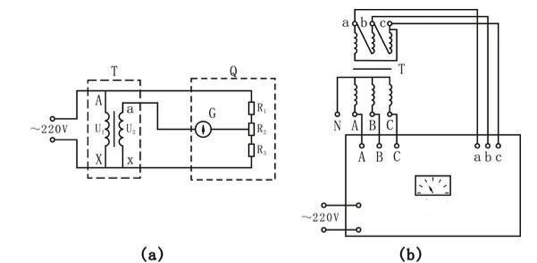The transformation ratio of the transformer is a very important technical parameter in the manufacture and use of the transformer. It is crucial for the accuracy of this parameter detection.
The transformer turn ratio tester is in the field of power measuring instruments, consists of transformer, variable resistor, resistance box, switch, toggle switch, phase sensitive amplifier, etc. Switching the switch makes it easy to wire, simple to operate, and improves work efficiency. In addition, it has the advantages of small size, easy carrying, and high accuracy. The JYT-F automatic transformer ratio tester produced by Kingrun transformer instrument is the ideal transformer ratio test equipment in power industry.
Transformer bridge than the working principle shown in Figure as below:

In the figure, when the primary side XA and XB terminals of the transformer to be tested and the NA and NB terminals of the transformer-to-voltage ratio bridge are collectively powered, the secondary side Xa and XB terminals of the transformer under test are compared with the Na and NB of the voltage transformer bridge. The voltages U1 and U2 are generated at the terminals. The reference value of the preset transformer ratio ratio disk is equal to the standard value of the voltage transformer ratio of the transformer under test, and the bridge error disk is adjusted so that the galvanometer G indicates zero, and the measured transformer ratio is obtained difference.
The transformer ratio bridge is usually composed of a ratio disk, an error disk, a phase sequence switch, a combined combination switch, an input transformer, an amplifier, and an attached galvanometer. Among them, the sensitivity of the ratio disk, error disk, phase sequence connection, link combination, and attached galvanometer requires routine verification.